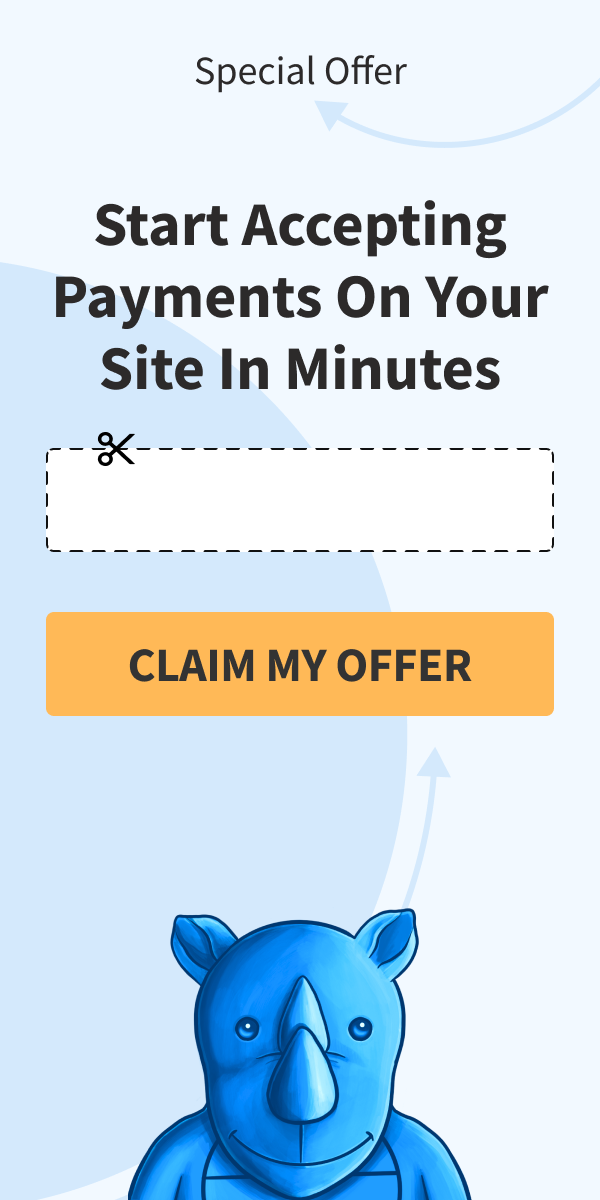Crowded Market: 6 Tips to Launch Your Products and Services
Last updated on
Are you wanting to launch your products or services and wondering how to do it in a crowded market?
Not all businesses can be disruptors that launch completely new products and services the world has never seen before. Most sell in crowded markets with a lot of competition.
In this article, we’ll share a few ways to find success with your products and services in a crowded market.
What Is a Crowded Market?
Crowded markets already offer customers a lot of options. They’re usually full of well-established businesses with years of experience serving the same customers.
These markets are sometimes called saturated markets because they feel full. If you’re like most entrepreneurs and small business owners, you’re fighting your way through a crowded market right now.
So, how should you launch your new products or services in a market like this? Let’s take a look at a few different principles you should consider to stand out from the crowd.
1. Find Your Point of Difference
Just because the market is crowded doesn’t mean you have a license to be unoriginal. The first step is to find a way to set yourself apart from all of the other products in the same market. The difference doesn’t have to be huge, but it needs to be significant enough so people understand it clearly.
What should your difference be? It can be your unique experiences and personal story or perhaps your extraordinary branding.
You might add technology to a service that’s typically performed manually, or do manually what is usually performed with software.
Or, maybe you have a controversial approach or ascribe to a different way of thinking that resonates with your target audience.
Whatever you use as your differentiator, put it at the front of your marketing. Potential customers need to see it, and understand it right away so they separate you from your competitors in their minds.
2. Niche Down to a Sub-Market
The easiest way to make space for yourself in a crowded market is to narrow down a smaller segment of your target market to create a target audience and then sell them a product that serves its needs better than any other business in your market.
For example, let’s say you’re a software engineer who wants to build and sell a solution for human resource managers. There are a lot of those already. But, what if you made an HR tool specifically for medical offices? Or for schools? Yes, those are smaller sub-markets, but they come with a few advantages:
- You can solve their problems better than anyone else because you don’t have to worry about pleasing people in other sub-markets.
- You can charge more because your solution is specialized, and because they don’t have very many options that meet their unique needs.
- It’s cheaper to reach potential customers because you know exactly where they are.
In fact, if you drill deep enough to identify a niche, you are bound to find a group of overlooked customers. These are people who want to buy, but for whatever reason have been ignored by the existing market players. Depending on their needs, these customers could be an easy foot in the door for you.
3. Don’t Discount Second Mover Advantage
First mover advantage is the benefit that comes with being the first player in a particular market. The first mover has a head start on an idea, creates most of the media buzz, and gets to define a lot of the core concepts, like how much a product or service costs or how it’s delivered.
First mover advantage is powerful, but it’s not the only advantage. A second mover is a business that responds to a first mover’s competitive action, often through imitation or a move designed to counter the effects of the first mover’s actions. Second mover advantage is a useful tool because the second mover gets to learn from the first mover’s mistakes.e
Here’s an example: When Uber refused to let customers tip through their app, Lyft quickly added that feature. When Uber drivers complained that they don’t get paid enough, Lyft lowered their take from the ride fees. When Uber was criticized for questionable business practices, Lyft began marketing itself as the ethical option.
No, Lyft hasn’t surpassed Uber as the ridesharing king, but their second mover advantage has solidified them as the most popular alternative. In fact, there are tons of other ridesharing apps you’ve probably never even heard of.
Study the existing players in the market. What mistakes have been made? Where do they leave money on the table? What do their customers complain about? These inefficiencies are places to make space for yourself.
4. Innovate Your Business Model
If there’s no way to change your product to make it unique, look for ways to innovate on your business model. Sometimes changing how people pay for your product gives them a good reason to switch from their existing provider.
For example, if your competitors sell one-off products, maybe you could sell the same kind of product on a subscription basis. Or maybe you could give part of it away for free in order to convert people into paying customers.
Fiverr is one of our favorite examples of model innovation. When Fiverr launched, it certainly wasn’t the only site to hire gig-based workers. It wasn’t even the only site to buy micro-gigs or pay for short-term freelance services.
However, Fiverr achieved huge success due to its innovative model that changes the way people hire other people for small tasks.
Instead of letting gig workers and clients negotiate rates, Fiverr sets the price point from the outset ($5) and lets the gig workers design services to meet it. This completely removes the negotiating element from transactions so gig workers and clients can focus on what’s important to them.
At the end of the day, Fiverr’s product is the same as any other freelancing platform. They simply connect freelancers and clients and give them a place to conduct a transaction. But Fiverr found a way to disrupt the industry with an innovative model and compete in a crowded market.
5. Build On Your Strengths
It’s tempting to compete in a crowded market by doing the same things as everyone else. If their product has ten features, you may want to build those same features into your product too. The logic goes, “If they have more features at the same price, customers will obviously choose their product.”
But, this isn’t always the case. Features are rarely the same. It’s fine to release a product with only three features, or even just one, if you do it well. The customers who really need that one feature may be willing to give up the others if you can show them that your product is the best at that one thing they really need.
If you’re weak at something, it’s almost always a waste of time and resources to raise that deficiency to a competitive level. Instead, focus on your strengths. Iterate on your product’s qualities that make it great until it’s the undisputed best in the market.
6. Focus On Your Relationships
For established, crowded markets, it’s easy to get swept up by the high-level strategy, fancy tools, and endless analytics. Your competitors have sophisticated processes and automations. They have teams of people and outsourced vendors. They make big decisions based on granular data. You should do all of that too, right?
No, not always. When you’re trying to make a name for yourself in a crowded market, sometimes it’s easier to focus on people. Speak to one person and convince them to buy. Then speak to another. Then another.
Will you explode into the market with this strategy? No. You won’t be featured across the blogosphere as the next big thing. But, if you don’t have the resources to make those kinds of waves, don’t bother. Instead, make a little ripple and turn it into bigger ripples by investing your energy into your customers.
Most importantly, act like a real human. Don’t try to be the proverbial corporate drone who always placates, but never apologizes. Take their feedback graciously and give them a reason to trust you. You wouldn’t believe how many people make purchases solely because they like the salesman.
Final Words On Launching In a Crowded Market
Just because a market is crowded doesn’t mean you should give up on your product or your business. It may take a little more planning and effort, but it’s entirely possible to create space for yourself and carve out some market share. The principles we outlined above will help you get there.
If you liked this article, you might also want to check out our following guides:
- What You Need to Start Selling Digital Products on WordPress
- How to Create Your Own Membership Site in WordPress
- Best Affordable Gumroad Alternatives (Compared)
- How to Accept Freelance Fees via Stripe + WordPress
- 13 Essential WordPress Plugins for Business Websites in 2023
- How to Create High-Converting Pricing Tables in WordPress
What are you waiting for? Get started with WP Simple Pay today!
To read more articles like this, follow us on X.
Disclosure: Our content is reader-supported. This means if you click on some of our links, then we may earn a commission. We only recommend products that we believe will add value to our readers.


